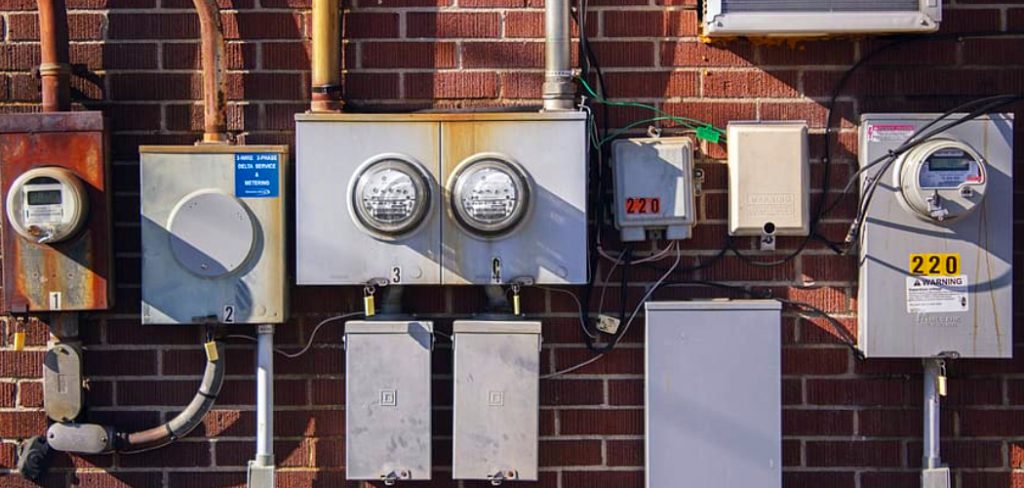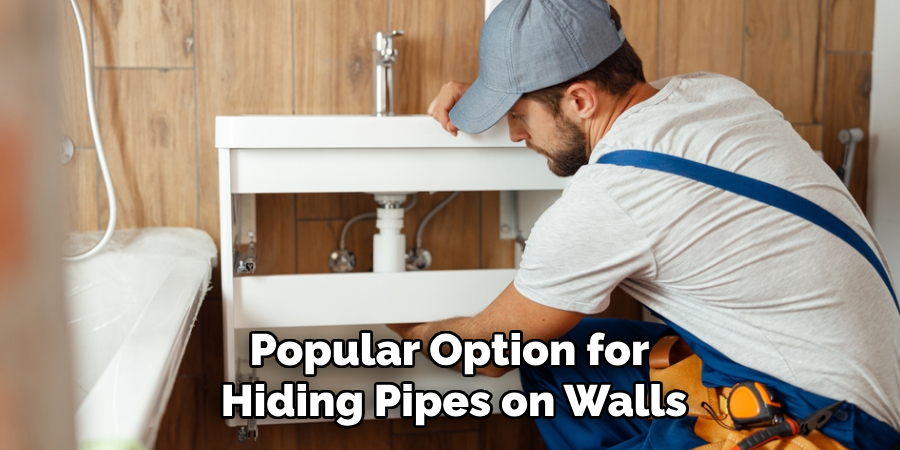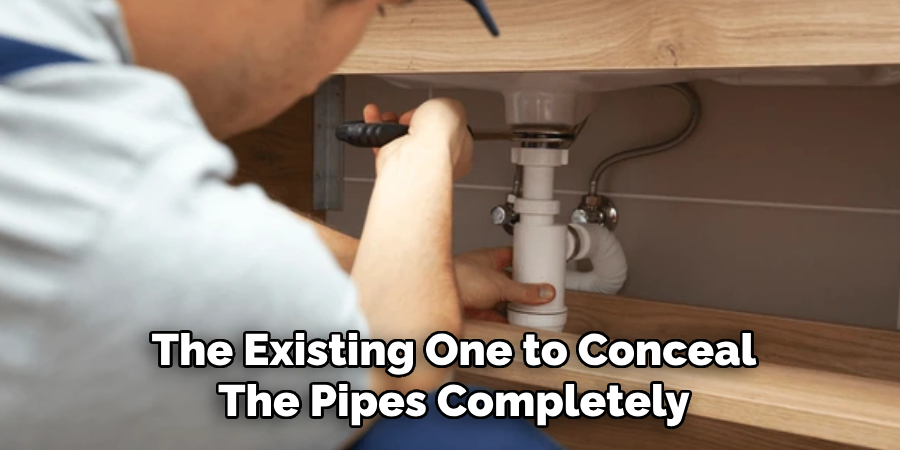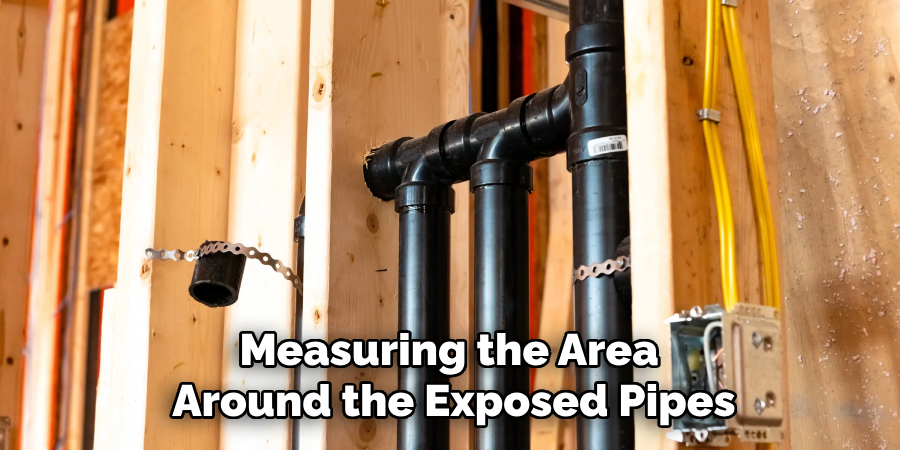Exposed pipes on walls can disrupt the aesthetic appeal of a room, making it look unfinished or unorganized. Fortunately, there are various creative and practical ways to hide these pipes and restore elegance to your space. Whether you’re aiming for a minimalist look, a decorative solution, or a fully concealed finish, there are options to suit every style and budget.

This guide on how to hide pipes on wall will walk you through several methods to effectively hide pipes on walls, allowing you to enhance the overall design of your home.
Why Hide Pipes on Wall?
Before we dive into the different ways to hide pipes on walls, it’s important to understand why it may be necessary. Here are a few reasons why you may want to consider hiding your pipes:
Aesthetics:
Exposed pipes can disrupt the visual flow of a room and make it look cluttered or unfinished. By hiding them, you can achieve a cleaner and more polished look.
Safety:
Pipes that are exposed on the wall may pose a safety hazard, especially for children or pets who may accidentally bump into them. Hiding them can prevent potential accidents.
Protection from Damage:
In cold climates, pipes that are exposed on walls can be vulnerable to freezing temperatures, leading to costly repairs. By hiding them behind walls or cabinets, you can protect them from extreme weather conditions.
Needed Materials
Depending on the method you choose, you may need some or all of the following materials:
Drywall:

Drywall is a popular option for hiding pipes on walls. It’s inexpensive, easy to install, and can be painted or decorated to match your room’s décor.
Plywood:
Plywood is another budget-friendly option that can be used to create a box-like structure around the pipes. It offers more flexibility in terms of size and shape compared to drywall.
Decorative Screens:
For a more decorative approach, you can use decorative screens or panels to cover the exposed pipes. These screens come in various designs and materials such as wood, metal, or fabric.
PVC Pipes:
If you’re looking for a more industrial or modern look, using PVC pipes to hide other pipes can create a unique and stylish design. These pipes are lightweight, easy to paint, and can be easily cut to fit the desired length.
Cabinets or Shelves:
Utilizing cabinets or shelves is another practical way to hide exposed pipes. This option not only hides the unsightly pipes but also provides additional storage space.
9 Simple Methods on How to Hide Pipes on Wall
Method 1: Install a False Wall
One of the most effective ways to hide exposed pipes is by installing a false wall. This method involves constructing a secondary wall in front of the existing one to conceal the pipes completely. While it requires some construction work and space sacrifice, it creates a seamless, polished appearance.

To install a false wall, you will need framing materials, drywall, screws, and basic tools like a saw and drill. Start by building a wooden frame along the section of the wall that has exposed pipes. Ensure the frame is securely attached to the existing wall and floor. Once the frame is in place, attach drywall to the front of the frame using screws, and then sand and paint it to match the room’s existing walls.
Installing a false wall not only hides the pipes but also allows you to run wiring or install insulation in the extra space for added functionality. While this method is ideal for creating a clean, finished look, it is best suited for larger rooms where losing a small amount of floor space won’t be an issue.
Method 2: Use a Plywood Box
For a more cost-effective and space-saving option, you can build a plywood box around the exposed pipes. This method is ideal for smaller rooms or areas where losing floor space is not an option.
To create the box, measure the length and width of your pipes and cut pieces of plywood accordingly. Then, assemble the pieces into a box-like structure and attach it to the wall using screws. Once in place, you can paint or decorate it to match your room’s décor.
Method 3: Install Decorative Screens
Decorative screens offer a stylish and versatile way to hide exposed pipes while enhancing the overall aesthetic of your space. These screens come in various materials such as wood, metal, or fabric and can feature intricate patterns or minimalist designs to suit your décor.
To use decorative screens, start by measuring the area around the exposed pipes to ensure the screen will cover them adequately. Once you have the correct size, choose a screen design that complements the room. You can attach the screen directly to the wall or use a frame to make it free-standing for easier access to the pipes if maintenance is needed.
Method 4: Create a Vertical Garden

For a more eco-friendly and unique approach, you can create a vertical garden to hide your exposed pipes. This method involves attaching small planters or pots to the wall around the pipes using screws or adhesive hooks.
You can choose plants that are suitable for indoor environments and add greenery to your space while also hiding the unsightly pipes.
Method 5: Use PVC Pipes
As mentioned earlier, PVC pipes offer a modern and industrial look when used to hide other pipes. To use this method, measure and cut the PVC pipe into pieces that will fit snugly over the exposed pipes.
You can then paint them in any color of your choice or leave them as they are for a more industrial vibe. Attach the pieces to the wall using screws or adhesive, making sure they cover the pipes completely.
Method 6: Install Wall-Mounted Cabinets
Wall-mounted cabinets are an excellent option for hiding exposed pipes while providing additional storage space. These cabinets come in various sizes and designs, making it easy to find one that fits your specific needs and aesthetic preferences.
To install these cabinets, start by measuring the area around the exposed pipes to ensure the cabinet will fit properly. Then, follow the manufacturer’s instructions for mounting it securely on the wall.
Method 7: Use Floating Shelves
Similar to wall-mounted cabinets, floating shelves provide a practical and visually appealing way to hide exposed pipes while adding storage space. These shelves can be easily installed with screws or adhesive hooks and offer a sleek and modern look.
The best part about using floating shelves is that you can customize the size and number of shelves to fit around the pipes, making them an ideal option for tight spaces.
Method 8: Create a Gallery Wall

If you have exposed pipes on a smaller section of the wall, creating a gallery wall is a creative way to cover them up. This method involves hanging multiple frames or artwork in various sizes and designs to create a visually appealing display that also hides the pipes. You can choose pieces that match your room’s décor or opt for an eclectic mix for added interest.
Method 9: Use Artwork or Tapestry
Lastly, if you’re looking for a simple and affordable solution, using artwork or tapestry to cover exposed pipes is a great option. You can choose a large piece of art or tapestry that covers the entire section of the wall with exposed pipes, creating a seamless and decorative solution.
Following these methods on how to hide pipes on wall, you can effectively hide exposed pipes and create a neat and tidy appearance in your space. Consider the size of the room, available space, and overall aesthetic when deciding which method works best for you. Remember to always follow safety precautions and seek professional assistance if needed. With some creativity and effort, you can transform any unsightly pipe into a stylish part of your decor!
Frequently Asked Questions
Q1: Can I Use These Methods to Hide Exposed Pipes in a Rental Property?
Yes, all of the above methods are temporary and do not require any permanent changes to the existing wall or structure. However, it is best to consult with your landlord before making any alterations to the property.
Q2: Are There Any Safety Concerns When Hiding Pipes?
It is essential to ensure that any attachments or coverings used in these methods do not interfere with the functionality of the pipes. It is also crucial to follow safety precautions and consult a professional if needed, especially when dealing with electrical or plumbing systems.
Q3: Can I Use These Methods for Outdoor Pipes?
Some of these methods, such as creating a vertical garden or using PVC pipes, can be used to hide outdoor exposed pipes. However, it is crucial to consider weather-proofing and durability when choosing materials and installation methods for outdoor use.
Conclusion
Hiding exposed pipes in your home doesn’t have to be a tedious or expensive task. With the variety of methods on how to hide pipes on wall outlined above, you can find a solution that fits your budget, space, and style preferences. Whether you opt for a seamless false wall, a creative vertical garden, or a simple artwork display, each approach offers a way to improve the aesthetics of your space while maintaining functionality.
By putting some thought and effort into the process, you can turn unsightly pipes into an opportunity to enhance your home’s overall design, making it more organized, inviting, and visually appealing.
About the Author
Adrian Green is a passionate woodworking enthusiast who has dedicated his life to the craft of woodworking. From his early days working alongside his father in the family woodworking shop, Adrian has honed his skills and developed a deep love for creating beautiful, functional pieces with his hands. As the voice behind The Woodenify Blog, he shares his knowledge, tips, and inspiration with fellow woodworkers of all skill levels, helping them build confidence in their abilities while learning new techniques.
Professional Focus
- Specializes in DIY woodworking projects, from furniture making to home décor.
- Provides step-by-step guides, tips, and practical tutorials for woodworkers at any skill level.
- Focused on empowering readers with confidence and knowledge through easy-to-follow instructions and hands-on techniques.
- Passionate about building a community where makers can share, learn, and grow together in the world of woodworking.
Education History
University of Craft and Design – Bachelor of Fine Arts (BFA) in Woodworking and Furniture Design
Woodworking Apprenticeships – Gained extensive hands-on experience through various workshops and mentorships with seasoned craftsmen, refining carpentry and furniture-making skills.
Expertise
- DIY woodworking, carpentry, furniture making, and home décor projects.
- Creating clear, accessible tutorials and guides for beginner to advanced woodworkers.
- Helping readers experience the satisfaction and fulfillment of turning raw materials into stunning finished products.
